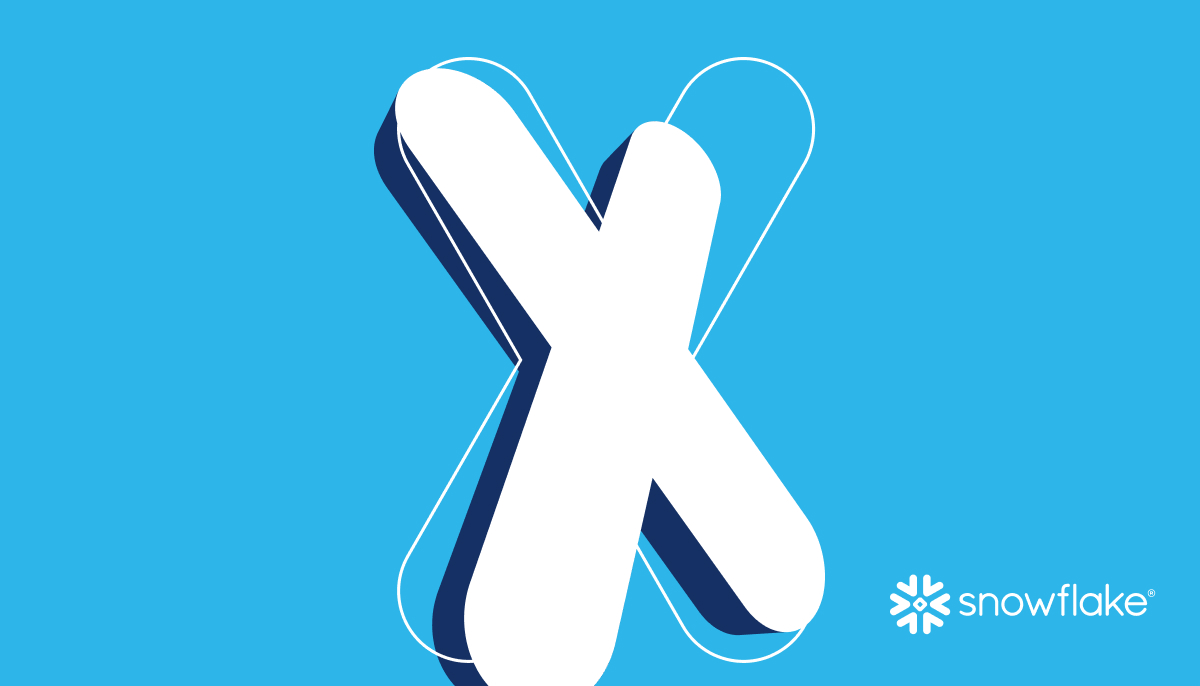
Happy birthday, Snowflake! Founded in August of 2012, Snowflake recently turned 10 years old. As we enter our second decade, we’d like to take this moment to look back on some key accomplishments to date. But first, let us have a reflective moment to say to each and every Snowflake employee, customer, and partner: We did this together. We couldn’t have done it without you.
We’ve delivered a ton of releases and innovations over the last 10 years. And as you heard at Snowflake Summit, they’ve resulted in some big disruptions along the way, starting with analytics, then collaboration, and now application development.
On a mission to enable every organization to be data-driven
From the beginning, Snowflake’s mission was to mobilize the world’s data. In 2012 Snowflake founders Benoit and Thierry set out to ultimately harness the power of the cloud with a cross-cloud, cross-region data platform that would ultimately enable a single global platform equipped to mobilize customer data, power essential workloads, and unlock seamless collaboration. Eight years ago, we announced general availability of Snowflake, the first in the market designed from the start for the cloud. Out of the gate, this changed the data analytics game by decoupling storage and compute and allowing analysts to combine all their data, no matter the type, into a single solution to analyze.
Innovating access to live data
After analytics, we set our sights on collaboration. The extent of data sharing, usually through file sharing, had more or less stagnated with FTP (file transfer protocol) for nearly 50 years. This methodology made it far too challenging for teams to work together on the same set of data.
Organizations are increasingly global, so we had to account for regional accessibility and the importance of working with data not just from internal sources, but from external partners and third parties to truly get the full data-driven scope. We built a cross-cloud technology layer, now called Snowgrid, to connect organizations across regions and across clouds through a single network. This enabled customers to securely and easily operate at global scale. And that opened up the ability to do cross-cloud collaboration, including instantly discovering, accessing, and sharing data, services, and apps globally, without ETL.
We introduced data sharing and followed with Snowflake Marketplace, offering access to more than 1,300 live and ready-to-query data sets from over 260 third-party data providers and data service providers to facilitate data sharing easily and securely all within the Snowflake Data Cloud. This has truly taken off to change what collaboration can be between organizations, and as of January 31, 2022 we saw stable edges (that is, a data share between a Snowflake customer and a data provider that has produced at least 20 transactions in which compute resources are consumed and such consumption results in recognized product revenue over two successive three-week periods (with at least 20 transactions in each period)) grow 130% year-over-year.
Disrupting application development
And our next area of disruption? It’s one that we’ve already seen success and excitement around – disrupting application development. This involves expanding programmability in Snowflake, which means adding more ways for developers to build and run applications in a way that is flexible, extensible, and performant. Snowpark is the developer framework for Snowflake that allows data engineers, data scientists, and developers to code in a familiar way with Python (public preview), Java, and other languages, and build complex pipelines, machine learning models, data applications, and more faster and more securely—all directly in Snowflake.
As we continue to expand the development experience on Snowflake, we’re making it easier to build, deploy, and monetize applications with the recently announced Native Application Framework, currently in private preview. Additionally, our newest workload, Unistore, introduces a modern way to work with transactional and analytical data together to support new use cases. We’ve seen hundreds of partners already building their applications on Snowflake, and we’re excited to see what you are all able to build with this next wave of innovation.
We’re just getting started
What’s most exciting is this is only the beginning. So again, congrats to our team and deepest thanks to our customers and partners for being on this journey with us. Bring on the next decade, we’re all over it!
Forward-Looking Statements
This post contains express and implied forwarding-looking statements, including statements regarding (i) Snowflake’s business strategy, (ii) Snowflake’s products, services, and technology offerings, including those that are under development or not generally available, (iii) market growth, trends, and competitive considerations, and (iv) the integration, interoperability, and availability of Snowflake’s products with and on third-party platforms. These forward-looking statements are subject to a number of risks, uncertainties and assumptions, including those described under the heading “Risk Factors” and elsewhere in the Quarterly Reports on Form 10-Q and Annual Reports of Form 10-K that Snowflake files with the Securities and Exchange Commission. In light of these risks, uncertainties, and assumptions, actual results could differ materially and adversely from those anticipated or implied in the forward-looking statements. As a result, you should not rely on any forwarding-looking statements as predictions of future events.
© 2022 Snowflake Inc. All rights reserved. Snowflake, the Snowflake logo, and all other Snowflake product, feature and service names mentioned herein are registered trademarks or trademarks of Snowflake Inc. in the United States and other countries. All other brand names or logos mentioned or used herein are for identification purposes only and may be the trademarks of their respective holder(s). Snowflake may not be associated with, or be sponsored or endorsed by, any such holder(s).


